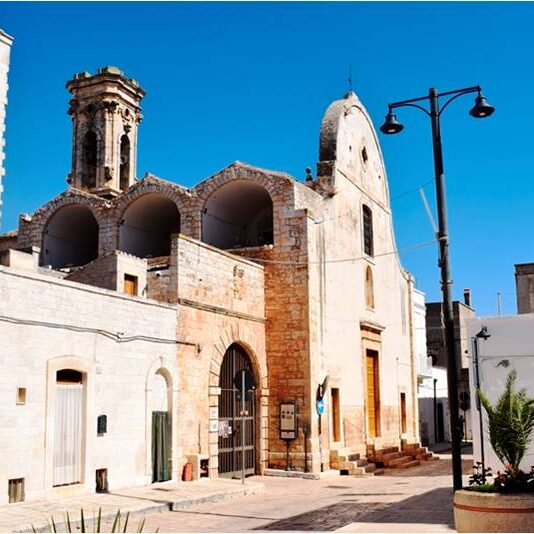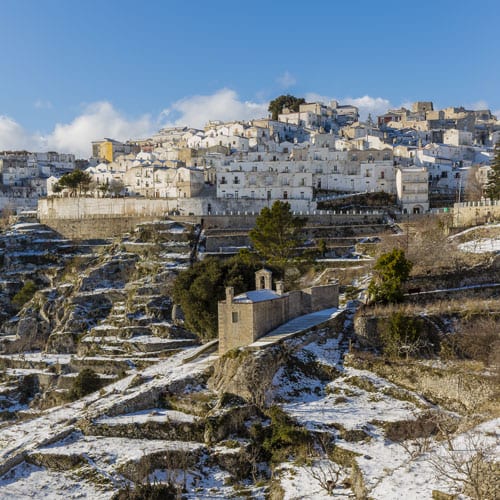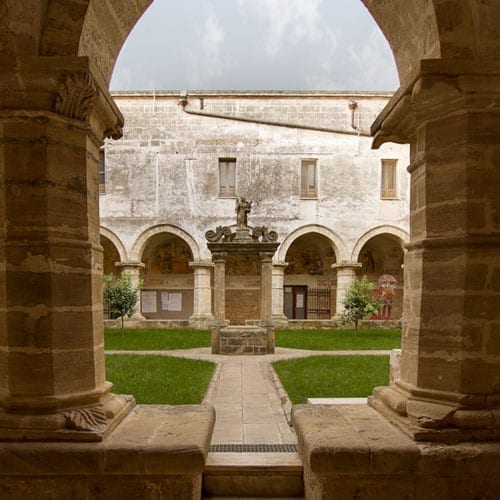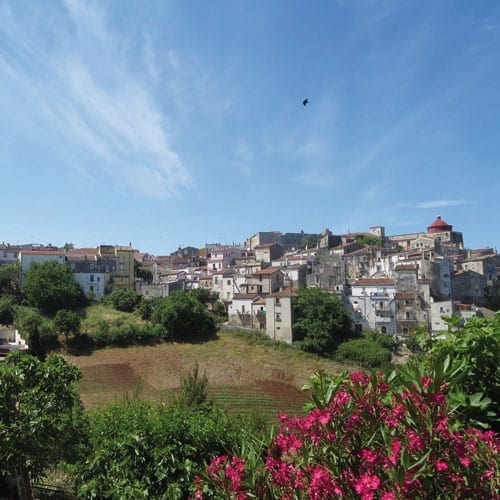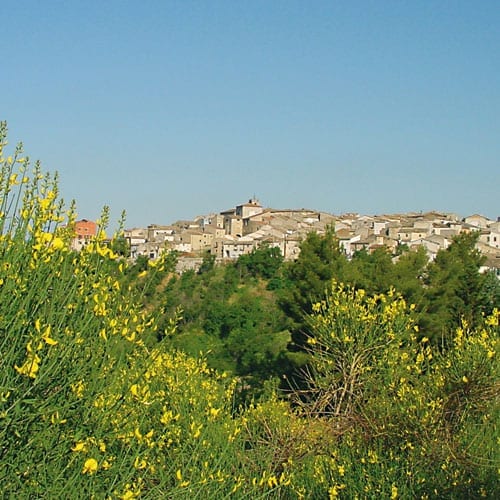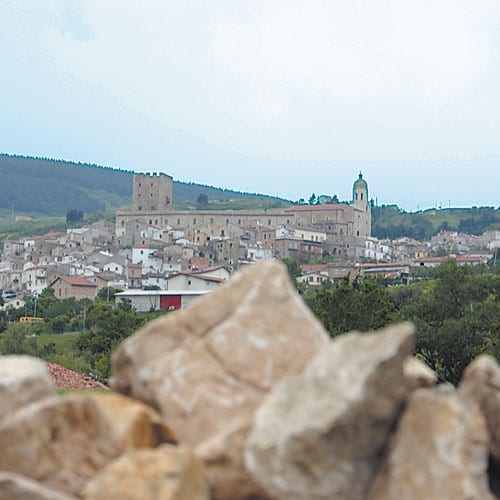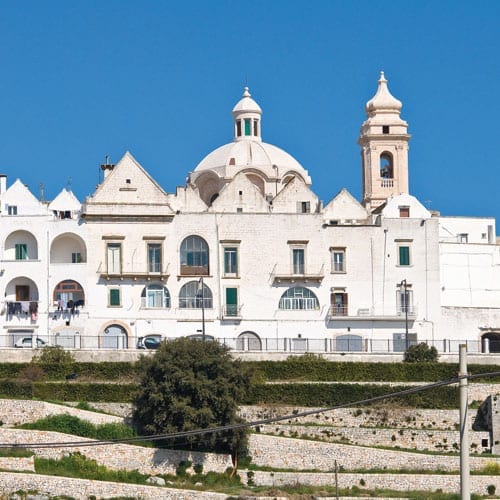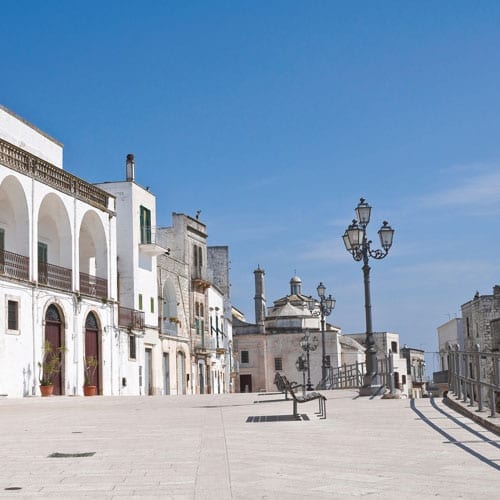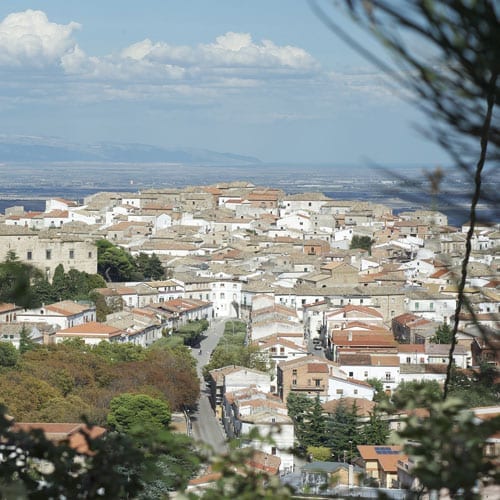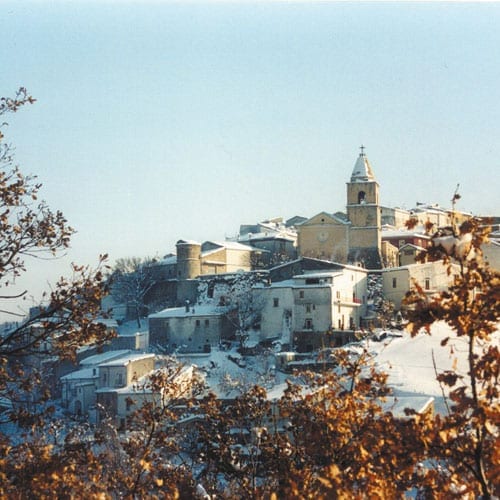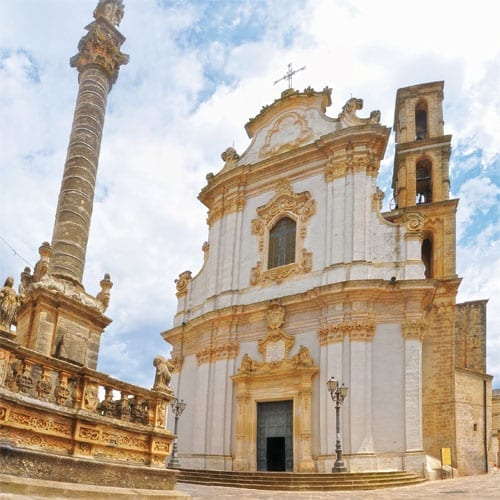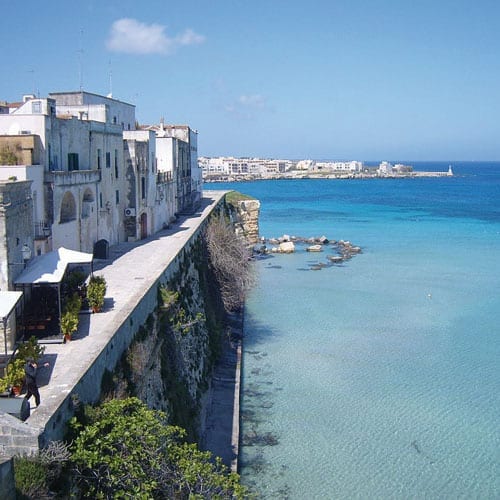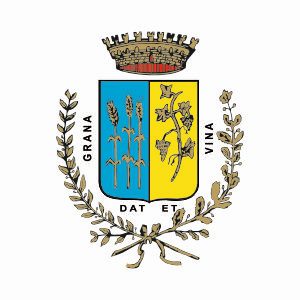 Gravina in Puglia
Gravina in Puglia
La città dell’acqua e della pietra
Borgo Ospite
MUNICIPALITY OF GRAVINA IN PUGLIA
(Province of Bari)
Altitude
m. 370 s.l.m.
Population
42286
SAINT patron
San Michele Arcangelo, 29 settembre
turisT INFORMATION
Ufficio Informazioni Turistiche
Via Matteotti 17, Tel. 080 3504516
infopointtouristgravina@gmail.com
www.comune.gravina.ba.it

The ancient village overlooks the rock habitat, which constitutes a unique fusion of nature and culture: the two medieval districts of Piaggio and Fondovito are dug into the tuff rock, along the karst canyon of the ravine. The medieval city is connected to the ancient one, on the other side of the ravine, by the 18th century Orsiniano Aqueduct Bridge, symbol of the city, which leads to the Archaeological Park of Botromagno and the necropolis of the Eternal Father, a site rich in historical evidence. The subsoil on which the two districts of Piaggio and Fondovito stand is made of very granular local limestone, which was removed and used to build new homes above the same excavated areas, according to a construction method “through removal and addition of material already removed”; large underground spaces were created that the people used as cellars, tunnels, rock churches and tombs, creating underground paths to be discovered. During the medieval period, Piaggio and Fondovito were populated with houses and buildings, which gradually expanded the town center. Observed from the other side of the ravine, once you have crossed the eighteenth-century Aqueduct Bridge, they show a unique scenario: the two districts, dominated by the Cathedral, almost seem like an extension of the ravine. Once inside the village, you cross the enchanting alleys and arches, walking up the steep steps that wind between the houses, stopping in the little squares and admiring how the ravine acts as a backdrop to the ancient tuff houses. At the end of the Fondovito district you reach the rock church of San Michele delle Grotte, to be visited together with the Cathedral of S. Maria Assunta, the Finia Library, the church of S. Maria del Suffragio (Purgatory), the Four Fontains, the church of Santa Sofia, the Cavato S.Marco, and and the rock church of Santa Maria delle Tombe.
MUSEUM OF THE POMARICI SANTOMASI FOUNDATION
The Palazzo Pomarici Santomasi is a seventeenth-century building. It houses, on the two floors, the Museum, the Art Gallery, the Library, the Historical Archive, the frescoes of S. Vito Vecchio.
COLA COLA HOUSE MUSEUM
Birthplace of the Loglisci family, it houses the chola craft workshop, a traditional terracotta whistle symbol of fertility and agro-pastoral culture.
BOILED BREAD
It is a first course of the peasant tradition, wich was traditionally eaten only with the hands. It is prepared with stale bread and vegetables: turnip greens, chard and fennel.
CALARIELLO
It was prepared by the shepherds. The dish consists of a lamb cooked with field vegetables from Alta Murgia (chicory, turnips, fennel, onion) and a pinch of chilli.
GRAVINA’S PALLONE
Pallone di Gravina is a semi-hard cheese with a spun raw paste, produced with cow’s milk, similar to caciocavallo. In the shaping phase, the characteristic ball shape is given to the dough.
SASANELLO
It is a dessert made from flour mixed with vincotto, or dried fig syrup, grated orange peel, cinnamon, cloves.
VERDECA DOC
It is one of the few Apulian wines obtained from grapes of ancient presence in the territory. Splendid and elegant wine suitable to accompany fish dishes but also fresh dairy products.
SAN GIORGIO FAIR
The agricultural fair of San Giorgio, at the end of April, represents one of the most important events: over 730 years of history that link the economy, culture and tradition of the territory.
PASSIO CHRISTI
Easter re-enactment of the Passion in the ancient part of the city. In a historic center steeped in mystery and sacredness, hundreds of figures stage the last hours of Jesus’ life.
MULTI-EPOCH GATHERING HISTORIA
An international event in mid-September, organised by the “Nundinae” association, offers an excursus that starts from the Roman Empire and reaches the contemporary age.
GRAVINAE NATIVITAS-ANCIENT CRAFTS IN NATIVITY SCENE
Living nativity scene that during Christmas transforms the historic center of Gravina, in particular the Fondovito district up to the rock church of San Michele delle Grotte, in the ancient Bethlehem.
It is possible to take a tour of the archaeological area and visit the ravine and the nearby Difesa Grande Wood and Alta Murgia Park through trekking routes.
Guarda tutti i video sulla pagina ufficiale Youtube de I Borghi più belli d’Italia.

